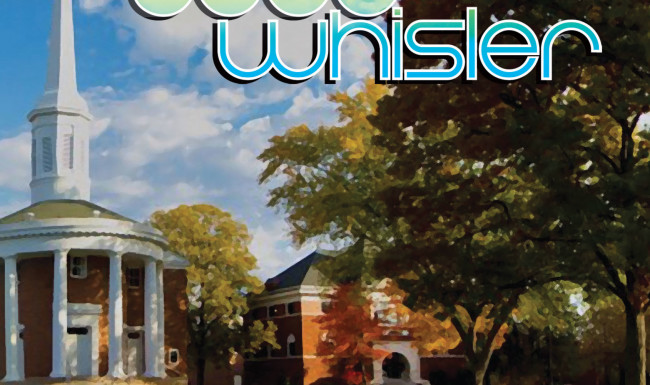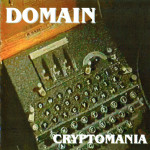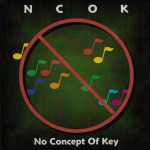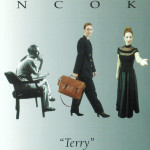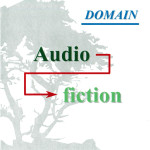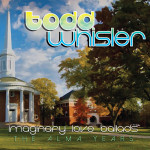Album Notes – Imaginary Love Ballads
Imaginary Love Ballads recorded February – September 2014
Sometime in 2013, after vowing in 2005 never again to record any original music, I realized that through good fortune in my career and modest living I had saved enough money to record another album of music I had written. And more to the point I realized I really wanted to. I opted to record songs written nearly 30 years earlier from when I was a college student. These were songs of which I had demos and lyric sheets and could learn how to play again. They had stood the test of time (for me, anyway). It was the lowest risk and in my mind still held a fairly high reward. More importantly it would bring some closure to me, to my personal journey in life in general and in music in particular. It was settled.
When I was a college student, I wrote 9 albums worth of material beginning in the summer of 1985 and concluding in the winter of 1987. I decided to pick the most appealing song from each album. For whatever reason, 9 songs did not seem like enough material so I also tabbed a song that had been written a year after I graduated and never made it to any album but which was in the same style as the other songs and therefore related. There was some work to be done prior to kicking off the project. First, I had to learn how to play the material. Some of these songs I had not played in three decades and had forgotten the chord structures. Also, some of the songs I hadn’t ever really finished writing properly and this project afforded me the chance to finish what I had started. Rather than hauling out my old tape recorder and going through the painful process of playing a section of the song, stopping, replicating the music I had just heard on my guitar, then rewinding, checking that I was correct before moving on to the next snippet of music and hoping the tape didn’t warp or break, around Thanksgiving of 2013 I went into Allusion Studios and had Jim Pavett transfer the tapes to digital sound files that I could listen to on my computer and never worry about warping or breaking. Even though I only intended to record one song from each album, I had Jim transfer all of the albums to digital format and then discarded the old tapes.
While rehearsing and re-learning the material, I discovered that half of the songs I had chosen were written in the same key – the key of D. Not only that, but three other songs were all the key of E. This meant 80% of the album would be in two keys. I decided to transpose the songs or change the key signature. Transposition keeps the same distance between chords it just moves them up or down the scale (or makes them higher or lower to play and sing). I transposed four of the five songs in D down the scale while I transposed two of the three songs in the key of E up the scale. I made another discovery while rehearsing – the song Goodbye was in fact two independent songs, one was in the key of G while the other was in the key of A. This meant the ten songs originally chosen had grown to eleven songs. There are twelve notes in an octave and after transposing keys, I had songs that covered eleven of the twelve notes. I therefore decided to add a twelfth song to cover the last remaining note in the octave – the elusive key of G#. In effect, this meant I had to learn the songs twice – once to reconstruct how I had played them originally and then again in their new key.
Although I was happy to have one song representing each note in an octave, I was concerned how to record my parts. All of the rhythm guitars are double tracked meaning I play them twice on two different guitars. I like to play the chords in different positions on each guitar in order to break up the monotony and to give the sound more depth. However, playing some of these songs in keys like G# or C# or B flat meant each guitar would have to play the exact same chord the exact same way. Therefore, for one of the guitars, rather than changing the chords, I would change its tuning either up or down so I could play the chord as it was originally written and have it be in the correct key. For all the rehearsals and scratch guitar recordings, I played in standard tuning – this meant I played the newly transposed chords the way they would be recorded. This was a bit unnatural for me and my playing suffered as a result.
Releasing your own album of original music is a bit like casting stones into the ocean. Whatever splash is made initially disappears immediately. The stone then sinks to the bottom of the sea floor to join the other countless millions of rocks lying there never to be seen or heard of again. In all likelihood, no one other than my family or friends will ever hear this album we spent 9 months recording. So why do it? I found when I was 19 years old that my greatest passion in life is music – listening to it, talking about it, playing it, writing it, performing it and recording it. But when I leave work and return to my otherwise cold, dark and empty house what sustains me, what fills me with a sense of wonder and joy, is music. Why do it? It is my obsession. It is my addiction. I don’t care who hears it or even if nobody hears it. It was made for me to hear, for me to ponder, for me to enjoy, for me to laugh at and cry with. For me to hold boldly up to an apathetic and indifferent planet and claim in my loudest and proudest cry, “I did this!”
- Run From The Moment. This song holds the unique distinction of not having been written in the 2 ½ year period during which all but 2 of the 13 songs on Imaginary Love Ballads were written as well as being the only song to which I contributed nothing. The song was written entirely by Leyth Mulla in Tucson in late 1995 after a fruitless year of asking every girl he found remotely attractive or interesting out on a date. They all declined and probably as a result he began the song by referencing his own tombstone (“So hand me a stone to carve in my name”) since he was already romantically dead. He launches into an extended description of fairly biting self-criticism for continuing to covet these women who have no interest in him and will never respond to his overtures – “burning” his eyes on their “aura of fire” and harboring a “secret desire” for them. It is his own pride that victimizes him; too proud to admit defeat and move on. Thus he reaps the “spoils of pride.” The women who reject him fare no better in their choice of men – falling prey to “the masters performing their craft” – the craft of seduction which is described as nothing more than a tired play consisting of a banal script that the women should see coming from a mile away yet do not. Instead they become metaphorical flies that are captured in the web of deceit spun by the masters who will never offer them the happily-ever-after ending they ostensibly seek. The implication is that men like the narrator would offer them what they truly seek but because he fails to pass their initial assessment of what a suitable man is, the women reject him outright and thus pay the price. As such, he is running from the moment of acceptance and will run forever, faking a smile as he bleeds to death on the inside. Musically, the song is angry, urgent and bitter until it erupts in a sneering synth solo before collapsing into introspective sad depression – perhaps hinting at the root cause of the initially angry burst. Leyth and I recorded a four track demo with his vocals sometime in December of 1995 then recorded an instrumental version in 1997 on the album Audio Fiction. We both felt the song’s effectiveness was compromised by omitting the human voice which was the optimal instrument to deliver the core melody. It is additionally rewarding to realize the song in a more complete fashion here than what was recorded 17 years ago. The song was originally written in the key of A minor but was transposed to the key of A# minor for this album. The first minute of the song contains a new arrangement to make it a suitable introductory song for the album. Variations of 11/8 time signature (6/8 then 5/8 or 5/8 followed by 6/8) were introduced at Leyth’s suggestion in the instrumental sections of the song. Otherwise, all lyrics and music remain faithful to the original version.
- Goodbye. On the heels of Are You Gonna Love Me, the first album I was so happy with I actually recorded demos of all ten songs, I decided it was time to confront some painful memories from the ages of 12 – 16. Thus in January of 1986 I wrote the autobiographical album Seattle. One of the reasons I chose Alma College was it was thousands of miles away from both Seattle and San Diego and I used the time and distance to reflect on what had happened to me in an attempt to decide which direction my life going forward should take. Goodbye was the closing track on Seattle and always a favorite of mine. The demo I recorded had many errors and flaws and I’m very glad to have gotten the song right finally. Whereas all my other songs are straight on fiction, allegories or flat out nonsense, Goodbye is autobiographical. It describes real events and real people and real emotions. It chronicles the last few days in Bellevue which I now know to be the week of June 21st 1982. The song structure is conventional enough – verse, verse, bridge, chorus, verse, bridge, chorus and outro. It’s the lyrics that I like – they expand the envelope. The first verse talks about the house, the second verse expands to the friends, the school, the neighborhood and the final verse expands to the whole city. And the closing line, “Inside I’m crying… inside” gets me choked up. In spite of its title, the song is really about not saying goodbye. How can a near seventeen year old young man contend with leaving his house, his friends and the only city he’s ever known? Answer: he can’t. And he didn’t. Goodbye was written in and is played in the key of A major. I rewrote the first verse since the original lyric was somewhat clumsy. Tommy sang this entire song in one take. Barry Sparks used a phase shifter on his bass in the choruses and in the outro. It is rumored to be the same phase shifter used in the Ted Nugent classic epic Stranglehold. At the very least, it’s the same make and model. This song owes a lot to Def Leppard as the twin guitars play harmony parts in the verses on the D, G and B strings exclusively.
- Carolyn. Written in San Diego sometime after September of 1987 when Don Currie and his then girlfriend (now wife of twenty years) Carolyn Morseburg visited me in San Diego and before July of 1989. In telephone discussions between me and Don it was clear Carolyn was The One and I began pondering what one should do after meeting Ms. Right. Since so many of my songs revolved around flawed relationships with the wrong woman, it was intriguing to explore a healthy relationship with the right one. The song doesn’t really have anything to do with Carolyn per se but rather with what she symbolizes: the perfect woman. The song is about what I imagined Don had to deal with, his fears of not being able to measure up to the caliber of man such a woman deserves. Regardless of his self-doubt, the song concludes they will be able to rely on their unquestioned love and lasting friendship to overcome all obstacles. 27 years after it was written, they remain a committed couple in a healthy and loving relationship. Although the lyrics are ultimately optimistic and hopeful, the music remains forlorn and sad; a result of the conflict I experienced between rejoicing in my long time friend’s having found the love of his life and at the same time both regret and envy that I had not found my special someone and even at the tender age of 21 suspected I never would. Carolyn was written in the key of D minor but was transposed to the key of C minor for this album. Any finger-picked song I’ve written in the key of D minor owes a debt of gratitude to Black Sabbath’s Children Of The Sea off the Heaven And Hell album from 1980. The song was written in San Diego sometime in 1988. The midsection in the final version was actually written by Don himself and was much better than what I was fiddling around with. Some of the original lyrics I found to be rather clunky so I revised them slightly in preparation of this recording.
- Grown Up. This song actually was written in San Diego in the early summer, probably May or June, of 1986. It was the closing song on my sixth album which was deliberately misleadingly labeled V. There was never any doubt in my mind that Grown Up would be the song to record from it. It tells an allegorical tale of a young woman trapped in a boring job and stuck in a vanilla relationship because that’s what everyone else has wanted for her to have. She rejects the tedium with which she has been saddled, quits her job, breaks up with her boyfriend and terminates the lease on her apartment, bundles all her worldly belongings in her car and boldly heads off for places unknown. In that moment when she makes her own decisions for her own reasons she becomes a grown up and even if things end badly for her, she is better off. In reality, there was no such young woman; she represented me. I had not graduated, had no long term career and was certainly not in any long term relationship. Those were all diversions thrown into the lyrics in order to disguise who the real subject of the song was. This is the most musically intricate song I wrote in my collegiate years and in my opinion the most progressive. In my opinion the better songs from these years were characterized by experimentation with chordal voicings (how I fretted chords) and this song is a prime example of it; in fact, it was the hardest one for me to re-learn after 28 years. Grown Up is played in the key of D major, the same one in which it was written. The original lyric was very wordy (a weakness I have suffered from my entire songwriting career) and I embraced the Tony Kishman school of lyrics when preparing this for recording – I deleted half the words. Thanks Tony! Musically, the midsection owes a lot to UFO’s Doctor Doctor, the big chorus at the end owes a debt to any number of songs by Rush, I think Cygnus X-1 off the Farewell To Kings album contained the same D#-F-G chord progression and of course, the closing theme is a tip of the hat to Brother Wolf Sister Moon from the Cult’s eponymous 1985 debut album which I listened to quite often at Alma.
- Not Gonna Cry Anymore. The opening song to my favorite of the Alma albums, the original Imaginary Love Ballads. It was written in San Diego in the summer of 1986 before I departed for a semester of overseas study in the city of Kassel in what was then known as West Germany. I remember the first line came to me as a result of seeing the shadows of the neighboring trees swaying and waving in the Southern Californian breezy night. The image causes the narrator of the song to contemplate other sleepless nights after breaking up with his girlfriend and resolving it is time to cease mourning the relationship. But he cannot because he doesn’t understand why the relationship failed (“I can’t live in the past but why couldn’t it have lasted?”) In the chorus, he reaffirms the only sensible course of action: he must forgive himself, forget her and move on. This song was actually about my fifth favorite song from the album; I found when I reviewed the tracks that most of them were 2 or 3 idea songs that got old. This one was a legitimate 4 idea song that was upbeat, written in a major scale and shorter than 4 minutes long. The original lyric was wordy and Tommy sang it in a punk-influenced style which I did not care for. Therefore, I cut the lyric in half and composed a different melody that was sung to the half note rather than the quarter note. Tommy did not take to this melody very readily and I had to endure a few discourses on how the original vocal melody was superior with a phony smile and look of attention on my face when all the time I knew the argument was fruitless and the decision had already been made. I was running from the moment! The song was originally written in the key of D major but was dropped to C# major for this recording. The lyrics as stated were chopped in half and I decided to try speaking then ultimately yelling “I gave you” in a fit of misplaced rage leading into the moody minor key midsection. This song, like Shot Down, adheres to the typical 80s rock structure – verse, verse, bridge, chorus, verse, bridge, chorus, midsection, guitar solo, bridge, chorus, chorus, out.
- I Love You (In So Many Ways). One of eight proposed song titles Travis Roberts, a friend from Mesa Community College in San Diego gave me for a prospective new album in the spring of 1985. Earlier that same year, he had taken a poem of mine entitled Little Rendezvous and set it to music, recorded it his bedroom and given me a copy of the tape. I was inspired and enabled – I felt I could do something similar to what he had done. In the spirit of the jam sessions Don Currie and I used to have in Bellevue, I tuned my guitar, plugged both it and a crummy microphone into the stereo my Dad had bought me for Christmas in 1979, pressed record and began playing and singing whatever came into my head. Although the title suggests a heartfelt ballad, the song is actually about the lack of love – she doesn’t love him back. In this sense, it is the very first imaginary love ballad as there was no object of affection in my life at that time – I was making the entire situation up. What is not made up is the fact that he blames her for not seeing “the real him” and refuses to change to get to know her better (“I don’t want to be what I am not”). As such, it is as much his fault as hers. Gradually, as the song builds, the lyrical tone changes from wistful longing and regret to anger as the inequity of unrequited love builds anger in him. The last verse is nearly lyrically identical to the first but is much more urgent and angry. This song was included in my very first “album” of songs – Viceroy And Mirasol which is an intersection very near my parents’ house in Rancho Bernardo that had a cool name. Although written while I was technically at Mesa Community College (where I met Travis), it’s still college even though it’s not Alma College. I Love You (In So Many Ways) was written in the key of E minor, it was transposed to F minor for this album. The fingerpicked instrumental opening owes a debt to the beginning of the song Rock Bottom by KISS off the Dressed To Kill album and then the rest of the song is an homage to Nights In White Satin by the Moody Blues from Days Of Future Passed. Hence the flute solo!
- Imaginary Love Ballad. This song actually began life as a 3 minute instrumental prelude to the closing song off one of my favorite albums Seattle. There was already a precedent; I had done the same to the closing song from the previous album. When we transferred the analog tapes to digital, Jim split Goodbye into two songs. I chose to make it its own track completely and given that we lacked a title track, it got its name from the album itself. It was written in January of 1986 in Alma. It began with some crashing chords in G major which Jim Pavett and Doug Floyd were quick to point out sounded a whole heck of a lot like Iron Maiden’s The Number Of The Beast – an album I had back then. It then transitioned the same basic chord change between G major and F major before seguing seamlessly into what could best be called a bridge in D minor which took a page from the Def Leppard songbook and kept the fingers on the same fret, just changed strings. That’s why you get a C minor to an E minor, a chord change that I would otherwise never dream of. Then back to our verse (as it were) for a synth solo before moving on to our… pre-chorus? It probably owes a lot to the chorus of Photograph by Def Leppard and Into The Fire by Dokken. Back to our verse for a cello solo that took forever to mix and then a brief trip to the Middle East courtesy of Rich Katz in the second bridge then a third verse and a second synth solo leading into another (longer) bridge that culminates in sort of a hybrid of Without Warning by Dokken and Love On A Real Train by Tangerine Dream for our conclusion. I don’t know why it ends with seven strummed E minor chords but that’s the way I’ve always played it. Imaginary Love Ballads was written in the key of G major (at least initially) and is played in the same key.
- Power Core. In the winter of 1986, I vowed to stop writing songs of probable emotional reactions to hypothetical relationships that were destined to fail, were in trouble or which had already failed with fictitious females (also known as imaginary love ballads) because I no longer found the topic to be fresh. I was ready for new types of songs. The best of the bunch was Power Core, written in Alma in March of 1987, a highbrow concept song about a dystopian future where the nation has been transformed into couch potatoes whose sole purpose in life is to watch TV and have little if anything to do with one another. Meanwhile, the people who provide the content rule the world unopposed so long as they keep the masses happy. It is cinema on an epic scale: military snare drums marching in unison as massive tom drum hits pummel the listener into submission, mournful Gregorian chanting to symbolize the subjugated masses who only now, after it is too late, perceive the truth and a wailing guitar solo crying out in despair for salvation. And a full 30 voices’ embodying the Power Core as they gloat triumphantly. The narrative perspective in fact is from the power core itself which could best be described as gloating. In writing the song’s music, I broke one of my songwriting rules which is never compose with any effects on the guitar since the sound of the guitar can mislead me into thinking a thin and unimaginative part is good. Such turned out to be the case with Power Core. The only section of the song that really worked was the chorus. During rehearsal, we began experimenting with different arrangements that were fresh and invigorating but which departed from the song’s implicit dark overtones of foreboding and despair. With Doug Floyd’s help, I rewrote the verses and bridges and added a pre-chorus which maintained the ominous air of impending doom but also gave the song some much needed swing and movement. Power Core was originally written in the key of E major but Doug and I rewrote it in F# minor. Although it doesn’t paraphrase them directly, the song’s approach reminds me of Pink Floyd except the lyrics are nowhere near as good as Roger Waters’. In every album I have recorded, there is always one song to which instruments, voices, etc. keep getting added and the song somehow avoids being too busy. There are at least 80 separate tracks on Power Core and heaven help me there could have been MORE.
- Life In November. After arriving in Alma in late August of 1985 and settling in for two months, I began to feel the urge to write songs again. The songs were mostly facile, just like most of the songs I had written on the prior album had been. One track, however, stood out. It was called Life In November. The song is actually a three act play. Act One consists of the protagonist’s reflecting on his lost love. Facing the onset of winter, he wishes for the warmth of love to safeguard against the impending cold. In the Second Act, he confronts his ex-girlfriend; accusing her of causing the end of the relationship and commanding her to take him back. Seeing that the command is falling on deaf ears, he changes tactics in the Third Act and asks her please to take him back. A dance of synthesizers and guitars ensues during which she accepts his invitation and the couple celebrates being reunited. This song was not written to conform to any songwriting conventions – it is comprised of musical sections I liked and that flowed logically and emotionally into one another. It was also marked by little teases and tricks – starting the song with the same chords that will take shape as the chorus four minutes later but disguising them by playing them on the piano as individual notes rather than as chords. It eschews the standard verse/bridge/chorus structure and exceeds 4 minutes in length. It was a song of which I was enormously proud and showed me how much fun songwriting could be as it was a song that rose to the same level as my favorite original compositions which always had resulted from collaboration with other artists. It’s the song that made me a songwriter for life. In my mind, there was never any doubt I would record it professionally one day. Life In November was written in the key of E minor and it is played in that key. The verses bear more than a passing resemblance to the song Xanadu by Rush off the A Farewell to Kings album from 1977. The bridge feels like a hybrid of Finding My Way by Rush off their eponymous 1974 debut and The Temples Of Syrnix from their 1976 2112 album. The chorus is relatively original. This song and version most closely resemble what I had in mind back in 1985.
- Space Rider On Loan. After graduating Alma with a degree in German that I would never use, I joined the ranks of the gainfully employed as a busboy at local restaurant Jeremiah’s (don’t bother looking for it, it became The Elephant Bar a few decades ago) and suddenly I had disposable income. I set myself to trying to understand what it was that the prestigious rock critics of the Los Angeles Times seemed to hear in artists and songs that I did not. After some research I concluded they liked weird music and ambiguous lyrics. I therefore strove to write a song the critics would like – I picked an unusual key (E flat minor) and wrote words chosen more for how they sounded rather than what they meant. The result became Space Rider On Loan. Who or what a space rider is by design is never defined; neither is whatever is meant by being on loan. The lyrics deliberately juxtapose opposites – low power/high hand, hot fever/cool head, black shirt/white vest. They also on occasion load up on the same vowel sound like “the nicest vice in paradise” or “a jamming man in a rock band.” The only description that is offered is how he dresses and the only image that seems to persist is one of absentia – the space rider, whoever he is, is not where everyone wants him to be, ostensibly because he’s on loan. The song was written in San Diego in the winter of 1987 for the ambitious Poseidon’s Trident which was the last album I wrote before meeting Leyth Mulla and abandoning my solo songwriting. Space Rider On Loan is played in its original key, E flat minor. Tommy made a few changes to the lyrics that made it fairly clear that he is the space rider. I’m reasonably sure the term “on loan” was borrowed from Jim Morrison’s lyric for Riders On The Storm “like a dog without a bone/an actor out on loan.” Structurally, it echoes a song from the band Tesla, in particular the song Changes off the Mechanical Resonance album from 1986. This is reinforced by the digital delay on Tommy’s lead vocal for which the song Rock me to The Top was the inspiration.
- Love Is A Song. In my mind, this song is a debate. This is the only “new” song on the whole album. Every other song was written 20 – 30 years ago and updated for today. Of the twelve songs, however, at first blush none of them was a suitable closer so as I always do, I requested Leyth to compose a suitable closing song. I told him the name of the album would be Imaginary Love Ballads and that name suggested a melody to him that sounded like a closer. I flew up to Portland at the end of April 2014 for a week and only on the last day did he demonstrate his idea to me. It was quite a bit different from what appears on this album. We worked out the chords and the melodies and I revised the lyrics a bit and voila, a closer was born. However, I awoke in the middle of the Portland night with lyrics and eventually music in my head (this never happens). I busily emailed my home account the words and resolved to set them to music once I was home. Leyth’s song was about someone who thinks they’ve found the love of their life but really hasn’t. They’re just lying to themselves. My revision was that they’ll never find any woman who is as beautiful as a song and when they do, their hopes come crashing back down because that woman is never interested in them (or me). The song also contains a line about “At last life can move forward/now that love has arrived” which to me suggested my life cannot move forward so long as anyone have not found the love of another person. My response was that I’ve already found love in music and no woman can ever measure up to it. Perhaps the mere fact that I found myself compelled to refute his alleged argument is proof that it is true. Who knows. Who cares. The song was written in the key of A minor, it was transposed down to the key of G sharp minor for this album. This is the only song that has varying tempos throughout the various sections of the song which is hardly surprising given that two different writers wrote at different times and in different moods. For whatever reason, I could not play in time to the swing beat. I kept drifting off the beat.
- Lights Of Home. After hearing Travis Roberts’ version of my poem Little Rendezvous in which he used a drum track that consisted of his beating the carpet in his bedroom for the kick drum and slapping a piece of paper on his bed for the snare drum, I suggested he instead consider recording our mutual friend Charles Gooden’s live drums. Somehow, that ended up being “let’s jam, all three of us, live.” I hadn’t played with live drums since 1978 and it hadn’t been a pleasant experience back then. Not because I dislike drums but because the drummer and lead guitarist (who happened to be brothers)’s parents were divorcing and there was a lot of tension in rehearsal and band practice. Sometime in early May on an unreasonably hot day, the three of us met at Charles’ parents’ house in East San Diego, tuned up, plugged in, began playing and the room exploded. It’s a rare delight to get on the same page instantly with other musicians and we played until we could not play anymore. My fingers blistered and bled yet I kept playing for the sheer joy of jamming. We spontaneously composed several songs, my favorite of which was Lights Of Home. It’s hard to invent chords, conjure rhymes and find melodies to sing all at the same time so the song suffers from some incoherent lyrics and repetitive chords. What the song does attempt to achieve is to draw a parallel between my two homes – Bellevue, WA and Rancho Bernardo, CA. This is something of a milestone as I had been very bitter about the move to Rancho Bernardo three years earlier in 1982. By 1985, the wounds were healing and I accepted both communities as home and appreciated the simple beauty of their lights as seen at night. The song then actually explores what is almost an imaginary love ballad – “And now, night is falling on the city and I’ve got to go but I won’t forget you girl nor the time that we’ve shared.” There was no girl. There was no time spent together. It was all fiction. After some rambling about driving too fast and forgetting how to be human, the song concludes in the fairly celebratory and joyous proclamation that our lives are golden so long as we do something with them. The song was originally written in the key of A minor but was transposed down to A flat minor for this album. At Tommy’s request, a lengthy, wordy midsection was thinned down. In many ways, this is exactly what Travis, Charles and I created 29 years ago and in many other ways, it is nothing like that song. The basic chord change owes a lot to the song Don’t Fear The Reaper by Blue Oyster Cult off their 1976 album Agents Of Fortune. Perhaps due to Doug Floyd’s atmospheric guitar which had hints of Andy Summers in it, this song has something of a Police vibe to it.
- Shot Down. I’ve found over roughly 30 years of writing songs that writing a song that has a prayer of being heard on the radio is much more challenging that one might think. The genre is restrictive and unforgiving. Of the plethora of songs I wrote in my collegiate years that tried to follow the rules, this was the most successful. It finds the right balance I think of being accessible, conventional and catchy yet not sounding exactly like the songs from which it borrows concepts. Shot Down was written in Alma in December of 1985 for the album Are You Gonna Love Me. The joy of writing the song was how well it transitioned from verse to bridge to chorus to midsection. The lyrical content was something of an afterthought but in loose terms it described some memories associated with the girl on whose shoulders the sun rose and set for me for nearly 4 years during my early teenage years. Perhaps it foreshadowed more direct songwriting focused on the roller-coaster formative years in Bellevue which would manifest itself in the next album Seattle. The original lyric made it clear the girl set the narrator up to walk in on her and his best friend. I felt that was implausible and made her extremely unsympathetic so I changed it to the more likely scenario of his trying to read the hints she was dropping (which were intended for his best friend, not him) and his persistence in entering her house when no one answers the doorbell. He searches the seemingly empty house until he finds what he is not meant to discover and sees something he wasn’t intended to see. Witnessing them together in the throes of passion breaks his heart but he really has no one to blame but himself. He had ample opportunity to spare himself the pain of discovery yet pressed on blindly and stubbornly. It is a tale in which there is no villain, no one is to blame for what happens yet there is clearly a victim. Shot Down was originally written in the key of D minor but was transposed down to B minor. One of the rhythm guitars was actually tuned down to C# tuning and sounded a bit grungy! Otherwise, no major changes were made to the song.


